Written by: @defi_monk
Translated by: Baihua Blockchain
Wall Street is experiencing a crypto boom.
Traditional finance has exhausted its growth narratives. Everyone is over-invested in artificial intelligence, and the allure of software companies is far less exciting than it was in the 2000s and 2010s.
For growth investors raising funds to invest in innovative stories with huge market potential, they are well aware that most AI stocks are trading at inflated valuations, and other "growth" narratives are becoming hard to find. Even the once-coveted FAANG stocks are gradually transforming into "compound growth" stocks that focus on quality, profit maximization, and annual returns around 15%.
As a reference, the median enterprise value/revenue (EV/Rev) multiple for software companies has dropped below 2.0 times.
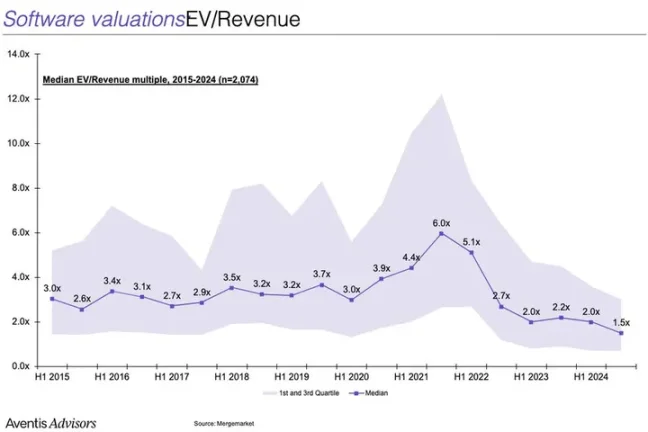
The Rise of Crypto Assets
BTC has broken its historical high, and the U.S. President is vigorously promoting crypto assets at a press conference, with regulatory tailwinds bringing this asset class back into the spotlight for the first time since 2021.
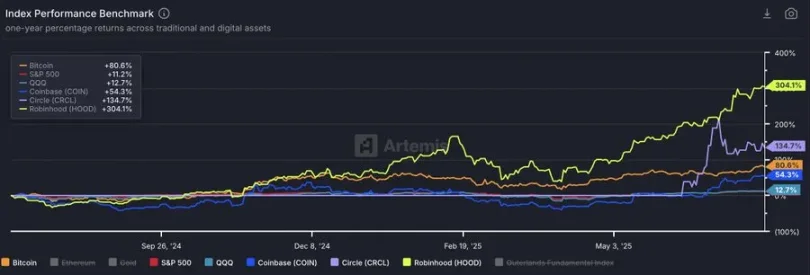
Comparison of BTC, COIN, HOOD, CIRCLE with SPY and QQQ (Source: Artemis)
But this time, it’s not about NFTs and Dogecoin. This time, it’s about digital gold, stablecoins, "tokenization," and payment reform. Stripe and Robinhood claim that crypto assets will be a major priority for their next phase of growth. COIN has entered the S&P 500. Circle has shown the world that crypto assets are an exciting growth story, allowing growth stocks to once again ignore earnings multiples.
What Does This Mean for ETH?
For us native crypto players, the competitive landscape of smart contract platforms seems very fragmented. There’s Solana, Hyperliquid, and a dozen new high-performance chains and Rollups.
We know that Ethereum's leading position is facing real challenges and survival threats. We know it has yet to solve the issue of value accumulation.
But I highly doubt Wall Street understands this. In fact, I would wager that most Wall Street "outsiders" are almost unaware of Solana's existence. XRP, Litecoin, Chainlink, Cardano, and Dogecoin may have more external recognition than SOL. Let’s not forget that these people haven’t paid attention to our entire asset class for several years.
What Wall Street knows is that ETH has stood the test of time, has been battle-tested, and has been BTC's main "follower" for years. What Wall Street sees is that it is the only crypto asset, aside from BTC, with a liquid ETF. What Wall Street likes is a classic relative value investment opportunity with clear catalysts.
These suited investors may not know much, but they know Coinbase, Kraken, and now Robinhood has decided to "build on Ethereum." With a little due diligence, they will discover that Ethereum has the largest on-chain stablecoin pool. They will start doing "moon math" and soon realize that while BTC has reached new highs, ETH is still over 30% lower than its peak in 2021.
You might think that underperformance is a bearish signal, but these investors think differently. They prefer to buy lower-priced assets with clear targets rather than chase high prices that make them question "is it too late already?"
I believe they have already entered the market. Investment authorization is not an issue; any fund can drive crypto asset investment as long as there are appropriate incentives. Although the crypto community has sworn off ETH for over a year, this token has performed exceptionally well for a month straight.
Year-to-date, the exchange rate of SOL to ETH has dropped nearly 9%. ETH's market cap share hit a low in May and has since seen the longest upward trend since mid-2023.
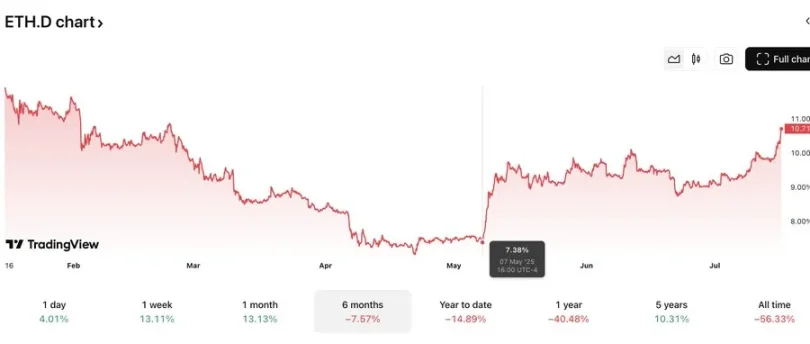
If the entire crypto community believes ETH is a "cursed coin," why is it still performing well?
It Is Attracting New Buyers
Since March, the inflow of funds into spot ETFs has been steadily rising.
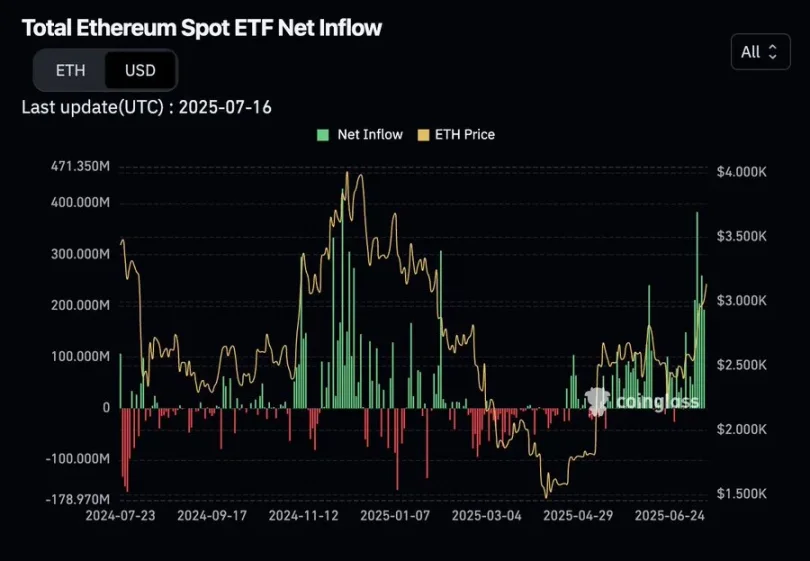
Source: Coinglass
ETH's "microstrategy" imitators are also gaining momentum, introducing structural leverage to the market early on.
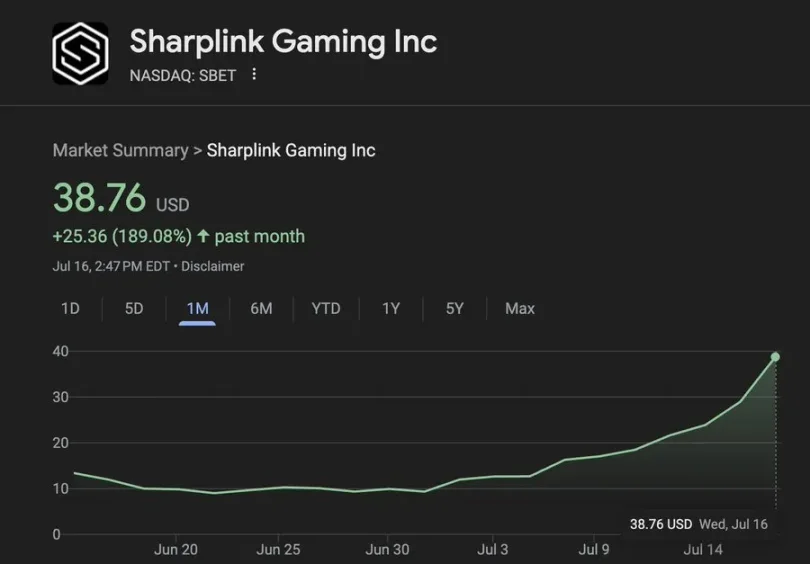
Even some crypto-native participants may have realized their exposure to ETH is insufficient and are starting to rotate, possibly pulling out from BTC and SOL positions that have performed well over the past two years.
I am not saying Ethereum has solved any problems. I think the current situation is that ETH as an asset will begin to decouple from the Ethereum network.
Conclusion
External buyers are bringing a paradigm shift to ETH assets, challenging our view of it as "only going down." The shorts will eventually be liquidated. Then, our crypto-native capital will decide to chase the trend before the market reaches a peak of speculation on ETH.
If this happens, new highs are not far off.
免责声明:本文章仅代表作者个人观点,不代表本平台的立场和观点。本文章仅供信息分享,不构成对任何人的任何投资建议。用户与作者之间的任何争议,与本平台无关。如网页中刊载的文章或图片涉及侵权,请提供相关的权利证明和身份证明发送邮件到support@aicoin.com,本平台相关工作人员将会进行核查。




